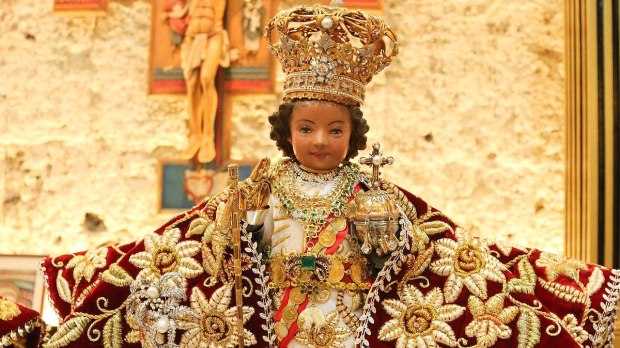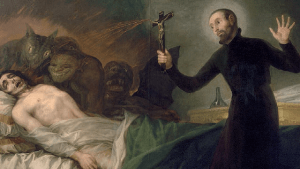Christianity has a long and cherished tradition in the Philippines, and the Santo Niño has been an integral part of that tradition since the 16th century.
On April 14, 1521, Portuguese explorer Ferdinand Magellan gave a Santo Niño (Holy Child of Jesus) statue as a gift to Rajah Humabon, ruler of Cebu Island in the Philippines.
The original statue was dressed like a Spanish ruler, with an elaborate crown and cape that surrounds the Child Jesus.
There also exist many stories and legends surrounding the Santo Niño statue that have led many to believe that it is miraculous.
Filipinos have maintained a long tradition of venerating the statue, and Pope Innocent XIII approved special liturgical texts for a special feast to honor the Child Jesus on the 3rd Sunday of January.
St. John Paul II recalled this history when celebrating a Mass for families in 1981 in Cebu City.
God’s providence in the Philippines has been truly wonderful. The Christianization that took place in the sixteenth century was not something merely accidental. Divine grace was at work when the people of this region had their first contact with the image of the Santo Niño. It is an important historical fact, rich in religious meaning, that on January 1, 1571 the village kingdom of Sugbu was renamed the “Villa del Santo Niño“, and thus the first city of the Philippines was placed under the patronage of the Child Jesus.
Pope Francis even celebrated the Santo Niño feast when he visited the Philippines on January 18, 2015.
It is a special joy for me to celebrate Santo Niño Sunday with you. The image of the Holy Child Jesus accompanied the spread of the Gospel in this country from the beginning. Dressed in the robes of a king, crowned and holding the sceptre, the globe and the cross, he continues to remind us of the link between God’s Kingdom and the mystery of spiritual childhood. He tells us this in today’s Gospel: “Whoever does not accept the Kingdom of God like a child will not enter it” (Mk 10:15).
The Santo Niño continues to proclaim to us that the light of God’s grace has shone upon a world dwelling in darkness. It brings the Good News of our freedom from slavery, and guides us in the paths of peace, right and justice. The Santo Niño also reminds us of our call to spread the reign of Christ throughout the world.
The Santo Niño devotion is a beautiful expression of a deep love of Jesus, the Christ Child, and fittingly is celebrated shortly after the Christmas season.
As Pope Francis prayed, “May the Santo Niño continue to bless the Philippines and to sustain the Christians of this great nation in their vocation to be witnesses and missionaries of the joy of the Gospel, in Asia and in the whole world.”



